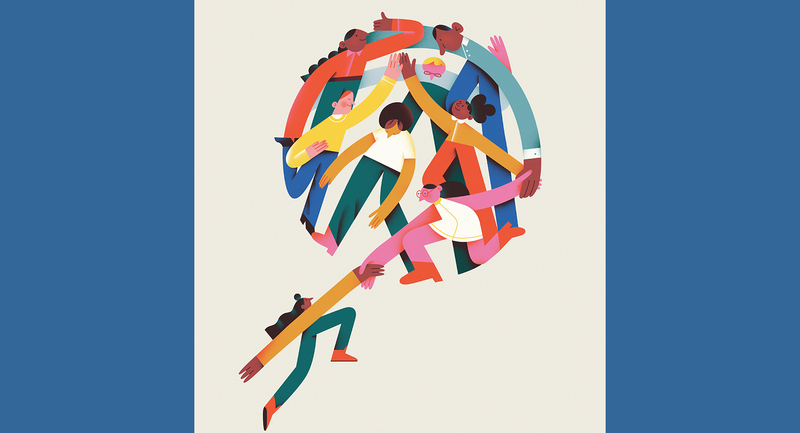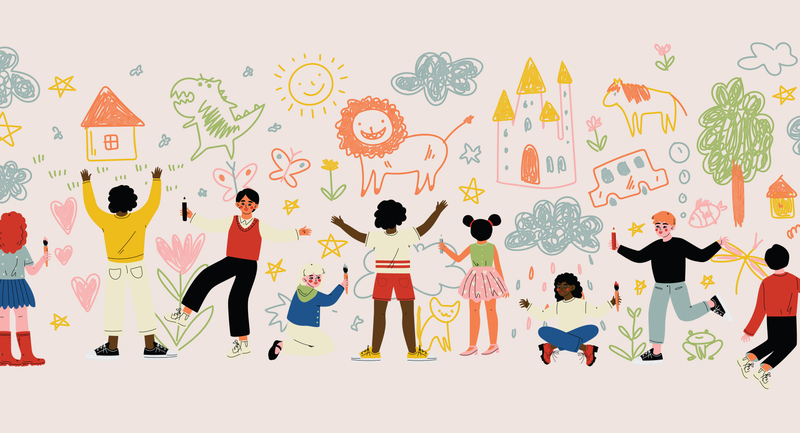Through the lens of design thinking and innovation, we work to continually create new ways to listen, empathize, and elevate student voice and leadership among our 3,000 students at Eden Prairie High School in the suburbs of Minneapolis. These are the design-inspired actions we took to begin to truly empower student voice.
Generate a Schoolwide Survey
We collaborated with students enrolled in marketing and statistics courses to design a survey for the entire student body. Student leadership created buy-in, a buzz of interest around the survey, and led to our most actionable survey outcomes yet. (See the end of this article for the types of questions we asked students.)
Invite and Elevate Underrepresented Voices
Our school social workers and psychologist decided to use some of their PLC time to better understand the experiences of students of color at our school. In small focus groups, these students shared what was going well and recommendations for improving the school. For example, they felt disconnected from our school at times, and were rarely, if ever, included in previous student leadership efforts. After these meetings, students reported that the opportunity to be heard as a collective of their peers led to honest and courageous conversations. These students became some of the first students encouraged for leadership team participation.
Crowd-Source Student Innovation
We ran a crowdsourced student innovation event to take student voice to the next level of true partnership and agency. Crowdsourcing asks stakeholders (in this case, students) to submit ideas to make the organization better—those ideas are voted on, and the ideas with the most votes are moved into a testing process. This process requires leaders to let go of our traditional power structure, and to truly empathize with their user by committing to implementing ideas that get voted to the top.
Students led the marketing, design, and implementation of our crowdsourcing event. Our first event garnered 260 idea submissions. We found that students had a genuine interest in improving their school. Even student submissions that initially did not seem positive or constructive could be reframed—during individual meetings with the student submitters—so that they contributed to a positive environment. Frequent student leadership meetings, as well as regular communication with staff and the community, supported the success of student-led improvement projects.
Use Data to Drive Action
We worked with our district data coach to triangulate, disaggregate, and analyze survey data, to really understand what our students were telling us. We needed to spend the time to accurately define the problems we were striving to improve, to create an actionable goal. We immediately shared our learning with staff and students and moved toward action. We focused on testing small ideas first and getting feedback on those small changes that would help us design larger changes in the future. Based on what we learned from studying our data, we took immediate action in the following areas:
- All-school Events: We discovered that students liked these events more than we previously understood. We added events and are partnering with students to create more representative event agendas to intentionally build community. This work will likely result in significant shifts to traditions in how we celebrate student achievement and community; this is important as we strive to ensure that each student feels a sense of belonging.
- Culturally Responsive Teaching: Our white students and black students report they experience teacher relationships differently, which has prompted our investment in culturally responsive professional development that invites student leadership and participation. This learning has led to transformational changes in creating more rigorous and authentic learning experiences, with a focus on relationships first and personalized learning, where students are members of curriculum review processes and lesson planning with teachers.
- Distributed Leadership Teams: We invited teams of teachers, administration, support staff, and students to consult, design and progress monitor improvement processes. Expanding and distributing leadership has created robust teams with dynamic skills and empowerment to act.
- Space Matters: We believe that student comfort at school promotes belonging, leading to more learning and positive student outcomes. Students are on teams working with architects in the renovation of our learning spaces. We tested this belief first with a space that already existed and had been identified in the budget for renovation.
Innovative Partnership
Disrupting traditional practices can be challenging, with many moving parts. However, having the courage to let go, and give others agency and empowerment to act can lead to powerful results. This requires a shift of thinking and acting; students must be at the table as a partner and a decision maker. By listening, empathizing, and elevating student voice and leadership, we are in closer partnership with our students. With a team of 3,000 innovators as our partners, we are confident in our ability to create an environment that empowers student voice and continues to lead transformational change.
The Eden Prairie High School Student Survey
Our schoolwide student survey included multiple choice questions, with Likert scale responses ranging from strongly agree to strongly disagree.
School Climate and Culture
- I believe my success is important to EPHS Staff.
- An adult at EPHS has made efforts to get to know me as a person.
- Students are kind to each other at EPHS.
- Students are kind to adults at EPHS.
- Schoolwide expectations are clear.
- I like my school.
- Non-teaching staff make an effort to understand my life outside of school.
- I feel a part of my school community.
- What is your favorite part of school?
- How might EPHS become more inclusive?
- Do you stress about school?
- What do you stress about?
The Classroom
- My classes are interesting.
- How challenging are your classes?
- Many of my teachers have helped me realize that I can do more than I thought I could.
- I feel comfortable asking my teacher for individual help about the things we are learning.
- Teachers treat students of all races and ethnicities with respect.
- My teachers listen to me.
- What do you value in a teacher?
- I know what I need to do to be successful in my classes.
- I see connections between what I'm learning in class and my life outside of school.
- I take pride in my schoolwork.
Student Leadership and Voice
- My ideas are valued at school.
- I have opportunities to lead in school.
- I have opportunities to get involved in school beyond my classes.
- I feel comfortable speaking up about school issues with an adult at school.
- Students in this school have a say in how things work.
The Leadership
- The principal is visible at EPHS.
- The principal communicates well with students.
- The principal cares about students' academic success in school.
- The principal cares about students as people beyond academics.
- The principal is open to new ideas to make our school better.
- The principal is a positive leader.
- What is one thing the principal has done to show you that he is a positive leader?
- What is one thing the principal could do to become a more positive leader?








